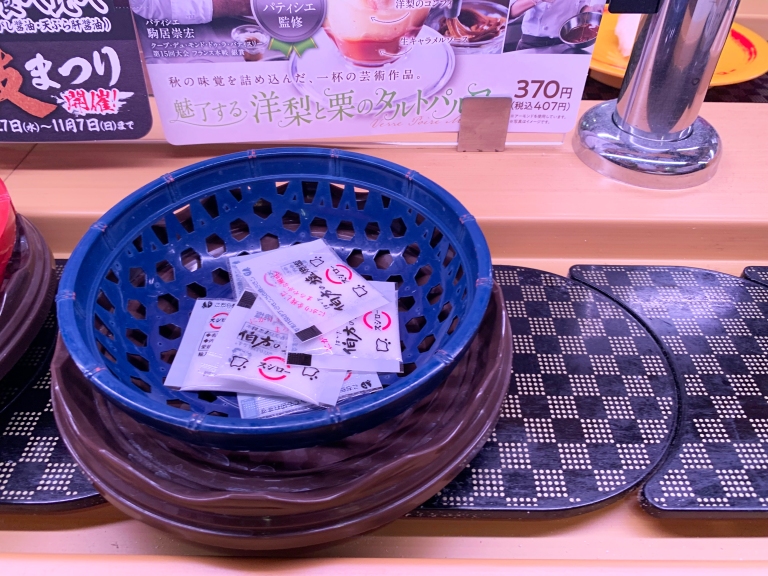
It turns out there’s a number of things you can put salt on, besides french fries!
Did you know that you can get little packets of salt at the conveyer belt sushi restaurant Sushiro? They’re very easy to overlook because they’re rotating around just like all the other dishes, sitting in a pile in a little bowl. If you’re not looking for them, you probably wouldn’t even see them, focused as you are on the sushi.
And even if you did, you’d probably wonder what the heck they’re for. With soy sauce as a preferred topping for most sushi, who needs salt? We asked conveyer-belt sushi (or kaitenzushi) maniac Kurara Sengyo what they use it for, and the answers were pretty interesting!
Kurara is a conveyer belt sushi expert that has previously given us great advice about what to order at both Sushiro and Kura Sushi if you don’t like raw fish. They’ve been obsessed with conveyer belt sushi restaurants for over 25 years, and to this day still make sure to visit one at least twice a week. Today, they taught us the best ways to use table salt at Sushiro. So, Kurara, what do you use salt on at Sushiro?
Kurara: “First, I use it on tempura sushi. At Sushiro, they make your tempura fresh to order, so it’s nice and crispy. If you sprinkle a little salt, it really adds to that crunchy texture.
“Sushiro’s white-fish tempura has an especially nice harmony of fluffy on the inside and crispy on the outside, and that’s why ten-tsuyu broth or soy sauce is just not quite enough…I eat their John Dory fish tempura nigiri (or matodai no tempura nigiri in Japanese) with salt on top and no sauce or broth.”
Interesting. So Kurara recommends sprinkling salt directly on the tempura. Personally, we never would have thought to use salt at all on sushi, but on tempura, it does sound pretty good.
Kurara: “I also put salt on white fish sushi. Needless to say, it’s good on sea bream (tai) and shore dotterel (nodoguro), but I especially recommend using salt on meat engawa, meat from the base of flounder or flatfish fin. Salt helps draw out the flavor of the shiso leaf Sushiro uses with its engawa sushi and makes the all-around taste much more refreshing.”
Oh, so it’s a way to bring out the flavors of the individual ingredients, then. We hadn’t really eaten the engawa cut much before, but when we tried it with salt, we were surprised how refreshing it actually was.
We have to say, though, neither of these suggestions was truly out of the ordinary. Is this all we can expect, even from a kaiten-zushi maniac?
Kurara: “And last is tuna (maguro).”
…Huh?
Kurara: “Tuna.”
…You mean…like, tuna tuna?
Kurara: “Yes.”
No way. Tuna is only supposed to be eaten with soy sauce. That’s just the way it is!
Kurara: “Well, I’m not saying that putting salt on tuna is better than soy sauce. But salt gives it a completely different taste. On Sushiro’s tuna, especially, salt really amplifies the flavor of the fish. It really suits fatty cuts like otoro (fatty tuna).”
Feeling some lingering doubt, we gave it a try. It wasn’t bad at all!
Kurara: “Also for tuna, I recommend you salt their minced tuna with onions (negitoro). It makes the flavor of the seaweed just burst in your mouth. Plus it gives a nice ocean-y flavor to the tuna, which is both mild and rich at the same time.”
That was exactly the experience we had when we tried it. Salt drew out the flavor of the seaweed even better than soy sauce. It also made the dish feel more satisfying. We used to think tuna was only meant to be eaten with soy sauce, but now we know a new way to eat it!
That reminds us of the time Sushiro recommended a unique way to eat sea bream that included salt–which ended up being delicious. It seems there is definitely some merit to sprinkling salt on sushi! Next time you head off to Sushiro for a bite, why not give one of these ideas a try?
Images © SoraNews24
● Want to hear about SoraNews24’s latest articles as soon as they’re published? Follow us on Facebook and Twitter!
[ Read in Japanese ]

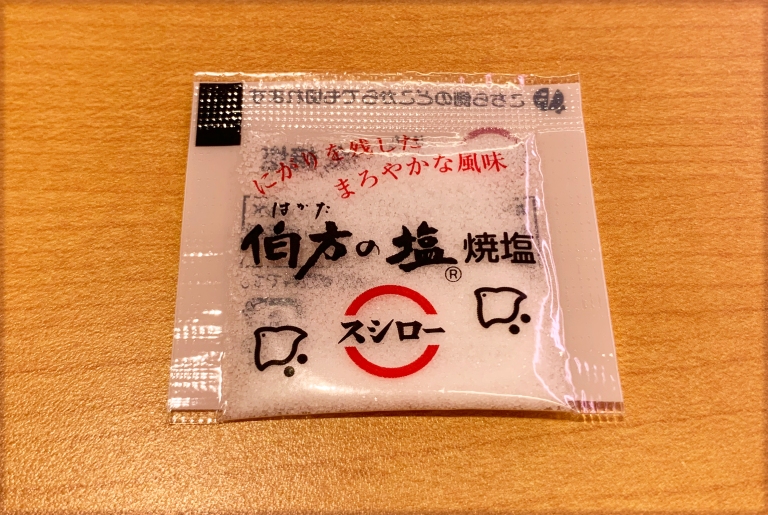
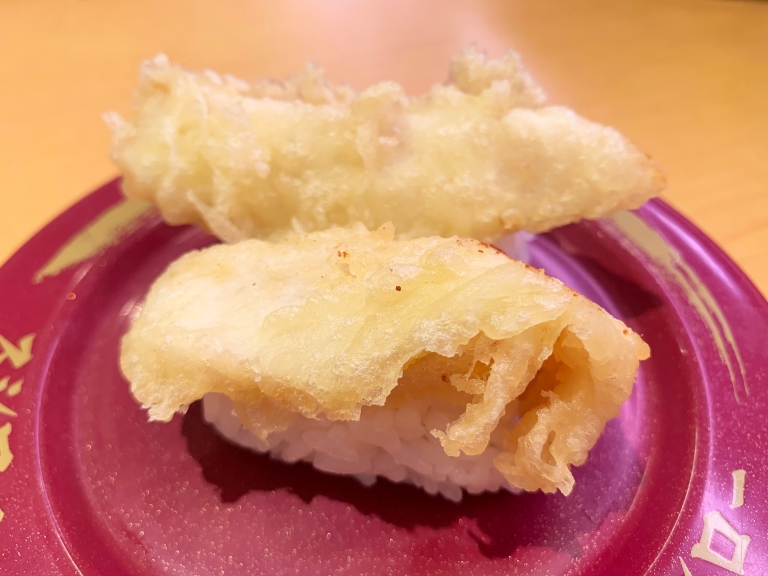
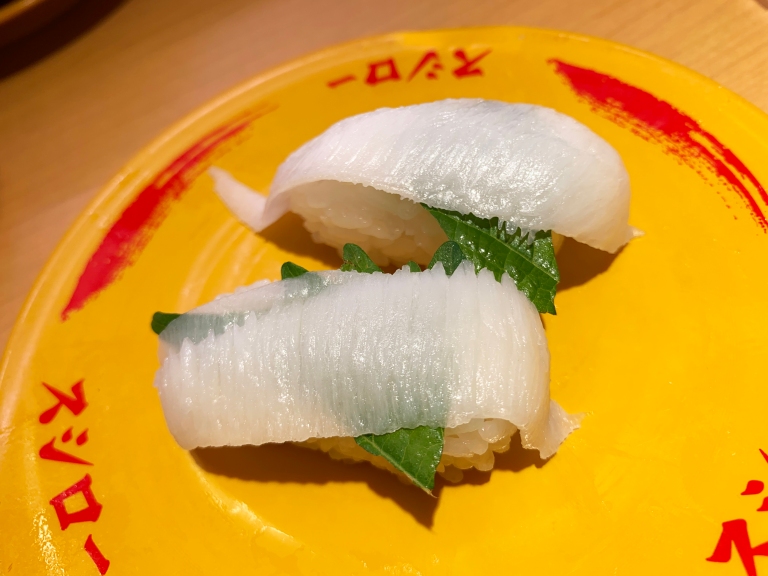
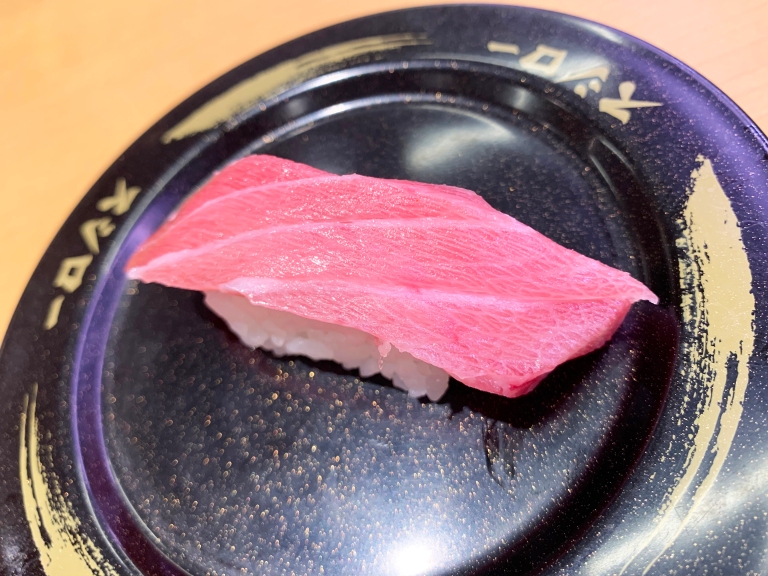
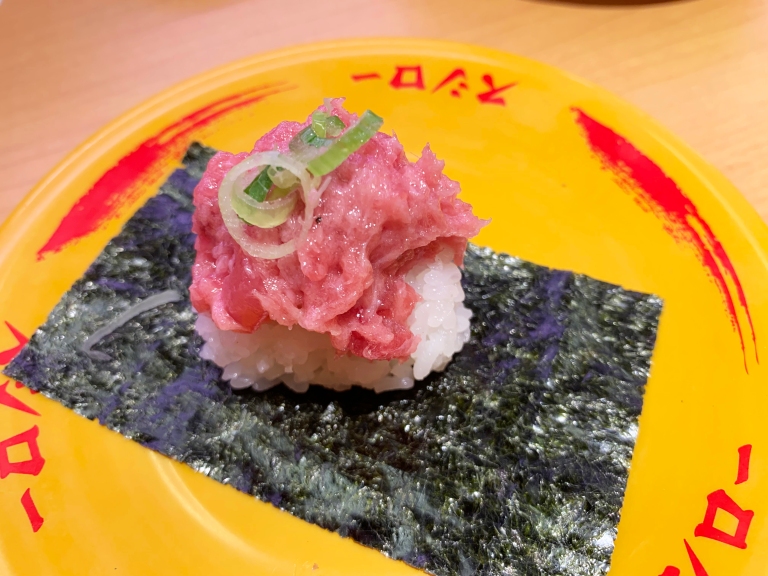
 Put down the soy sauce! We try a new “expert” way to season your sushi【Taste test】
Put down the soy sauce! We try a new “expert” way to season your sushi【Taste test】 We try a rotating sushi chain’s super high-quality 3-layer caviar, sea urchin & fatty tuna sushi
We try a rotating sushi chain’s super high-quality 3-layer caviar, sea urchin & fatty tuna sushi Revolving sushi restaurant’s “Sushi of the World” Festival brings unusual fish to the table
Revolving sushi restaurant’s “Sushi of the World” Festival brings unusual fish to the table Four things you should order at rotating sushi restaurant Sushiro if you don’t eat raw fish
Four things you should order at rotating sushi restaurant Sushiro if you don’t eat raw fish Japan super budget dining – What’s the best way to spend 1,000 yen at sushi restaurant Sushiro?
Japan super budget dining – What’s the best way to spend 1,000 yen at sushi restaurant Sushiro? How to order snacks on a Shinkansen bullet train in Japan
How to order snacks on a Shinkansen bullet train in Japan Japan’s new difficult-to-drink-from beer glass protects your liver, but it’s a brutal experience
Japan’s new difficult-to-drink-from beer glass protects your liver, but it’s a brutal experience Demon Slayer: Kimetsu no Yaiba gets new roller coaster attractions and food at Universal Studios Japan
Demon Slayer: Kimetsu no Yaiba gets new roller coaster attractions and food at Universal Studios Japan Burger King Japan suddenly adds Dr. Pepper and Dr. Pepper floats to its menu nationwide
Burger King Japan suddenly adds Dr. Pepper and Dr. Pepper floats to its menu nationwide New Pokémon ice cream, dessert drinks, and cool merch coming to Baskin-Robbins Japan【Pics】
New Pokémon ice cream, dessert drinks, and cool merch coming to Baskin-Robbins Japan【Pics】 New Nintendo Lego kit is a beautiful piece of moving pixel art of Mario and Yoshi【Photos】
New Nintendo Lego kit is a beautiful piece of moving pixel art of Mario and Yoshi【Photos】 New samurai glasses are Japan’s latest weird must-have souvenir
New samurai glasses are Japan’s latest weird must-have souvenir Kyoto Tower mascot termination reveals dark side behind cute Japanese characters
Kyoto Tower mascot termination reveals dark side behind cute Japanese characters Hello, cosmetics! Clinique teams up with Hello Kitty this summer for first-time collaboration
Hello, cosmetics! Clinique teams up with Hello Kitty this summer for first-time collaboration This Nara workshop has been making deer crackers for more than 100 years and offers tours【Photos】
This Nara workshop has been making deer crackers for more than 100 years and offers tours【Photos】 Nintendo history you can feel – Super NES, N64, and GameCube controllers become capsule toys
Nintendo history you can feel – Super NES, N64, and GameCube controllers become capsule toys “The most Delicious Cup Noodle in history” – Japan’s French Cup Noodle wins our heart【Taste test】
“The most Delicious Cup Noodle in history” – Japan’s French Cup Noodle wins our heart【Taste test】 Starbucks releases a cute Frappuccino and Unicorn Cake…but not in Japan
Starbucks releases a cute Frappuccino and Unicorn Cake…but not in Japan McDonald’s Japan’s Soft Twist Tower: A phantom ice cream only sold at select branches
McDonald’s Japan’s Soft Twist Tower: A phantom ice cream only sold at select branches Yabai Ramen: What makes this Japanese ramen so dangerous?
Yabai Ramen: What makes this Japanese ramen so dangerous? Finally! Nintendo Japan expands Switch 8-bit controller sales to everybody, Online member or not
Finally! Nintendo Japan expands Switch 8-bit controller sales to everybody, Online member or not Japanese government wants to build luxury resorts in all national parks for foreign tourists
Japanese government wants to build luxury resorts in all national parks for foreign tourists To combat declining birth rate, Japan to begin offering “Breeding Visas” to foreigners
To combat declining birth rate, Japan to begin offering “Breeding Visas” to foreigners 10 things you should buy at 7-Eleven in Japan
10 things you should buy at 7-Eleven in Japan Studio Ghibli releases anime heroine cosplay dresses that are super comfy to wear
Studio Ghibli releases anime heroine cosplay dresses that are super comfy to wear Woman charged for driving suitcase without a license in Osaka
Woman charged for driving suitcase without a license in Osaka Studio Ghibli unveils My Neighbour Totoro miniature house model
Studio Ghibli unveils My Neighbour Totoro miniature house model Kyoto experiencing problems with foreign tourists not paying for bus fares, but not on purpose
Kyoto experiencing problems with foreign tourists not paying for bus fares, but not on purpose Fighting mild hunger with a Japanese soda that turns into jelly in the stomach【Taste test】
Fighting mild hunger with a Japanese soda that turns into jelly in the stomach【Taste test】 Studio Ghibli’s Howl’s Moving Castle tapestry unveiled in Japan for first time
Studio Ghibli’s Howl’s Moving Castle tapestry unveiled in Japan for first time McDonald’s new Happy Meals offer up cute and practical Sanrio lifestyle goods
McDonald’s new Happy Meals offer up cute and practical Sanrio lifestyle goods Sales of Japan’s most convenient train ticket/shopping payment cards suspended indefinitely
Sales of Japan’s most convenient train ticket/shopping payment cards suspended indefinitely Sold-out Studio Ghibli desktop humidifiers are back so Totoro can help you through the dry season
Sold-out Studio Ghibli desktop humidifiers are back so Totoro can help you through the dry season Japanese government to make first change to romanization spelling rules since the 1950s
Japanese government to make first change to romanization spelling rules since the 1950s Foreigner’s request for help in Tokyo makes us sad for the state of society
Foreigner’s request for help in Tokyo makes us sad for the state of society Ghibli founders Toshio Suzuki and Hayao Miyazaki contribute to Japanese whisky Totoro label design
Ghibli founders Toshio Suzuki and Hayao Miyazaki contribute to Japanese whisky Totoro label design Doraemon found buried at sea as scene from 1993 anime becomes real life【Photos】
Doraemon found buried at sea as scene from 1993 anime becomes real life【Photos】 Tokyo’s most famous Starbucks is closed
Tokyo’s most famous Starbucks is closed Princesses, fruits, and blacksmiths: Study reveals the 30 most unusual family names in Japan
Princesses, fruits, and blacksmiths: Study reveals the 30 most unusual family names in Japan Meat lovers, you can now satisfy your carnivorous cravings at this revolving sushi restaurant!
Meat lovers, you can now satisfy your carnivorous cravings at this revolving sushi restaurant! Sushi Ramen restaurant serves up the best of both worlds in one epic Japanese meal
Sushi Ramen restaurant serves up the best of both worlds in one epic Japanese meal Which Japanese conveyor belt sushi chain has the best tuna sushi?【Taste test】
Which Japanese conveyor belt sushi chain has the best tuna sushi?【Taste test】 Japanese conveyor belt sushi restaurant chain makes sushi with the help of artificial intelligence
Japanese conveyor belt sushi restaurant chain makes sushi with the help of artificial intelligence Which Japanese conveyor belt sushi chain has the best negitoro sushi?【Taste test】
Which Japanese conveyor belt sushi chain has the best negitoro sushi?【Taste test】 Which Japanese conveyor belt sushi chain has the best Prawn Tempura Sushi?【Taste test】
Which Japanese conveyor belt sushi chain has the best Prawn Tempura Sushi?【Taste test】 How to have a great meal at conveyer belt sushi chain Kura Sushi even if you hate raw fish
How to have a great meal at conveyer belt sushi chain Kura Sushi even if you hate raw fish Which Japanese conveyor belt sushi chain has the best bintoro sushi?【Taste test】
Which Japanese conveyor belt sushi chain has the best bintoro sushi?【Taste test】 Japan’s Sushiro revolving sushi chain stops revolving with conveyor-less food court branch
Japan’s Sushiro revolving sushi chain stops revolving with conveyor-less food court branch Supermarket sushi becomes a hot topic with foreigners on Reddit, but is it any good?
Supermarket sushi becomes a hot topic with foreigners on Reddit, but is it any good? Which Japanese conveyor belt sushi chain has the best yellowtail sushi?【Taste test】
Which Japanese conveyor belt sushi chain has the best yellowtail sushi?【Taste test】 Shun seafood sushi with new meat sushi lineup at Japan’s favorite kaitenzushi chain
Shun seafood sushi with new meat sushi lineup at Japan’s favorite kaitenzushi chain Who’s got the best, cheapest one-person sushi delivery in downtown Tokyo? Mr. Sato investigates!
Who’s got the best, cheapest one-person sushi delivery in downtown Tokyo? Mr. Sato investigates! Do gohan no otomo, Japan’s traditional easy white rice toppings, work with toast?【SoraKitchen】
Do gohan no otomo, Japan’s traditional easy white rice toppings, work with toast?【SoraKitchen】 Let’s go to a conveyor belt sushi restaurant — to enjoy delectable desserts!
Let’s go to a conveyor belt sushi restaurant — to enjoy delectable desserts!
Leave a Reply